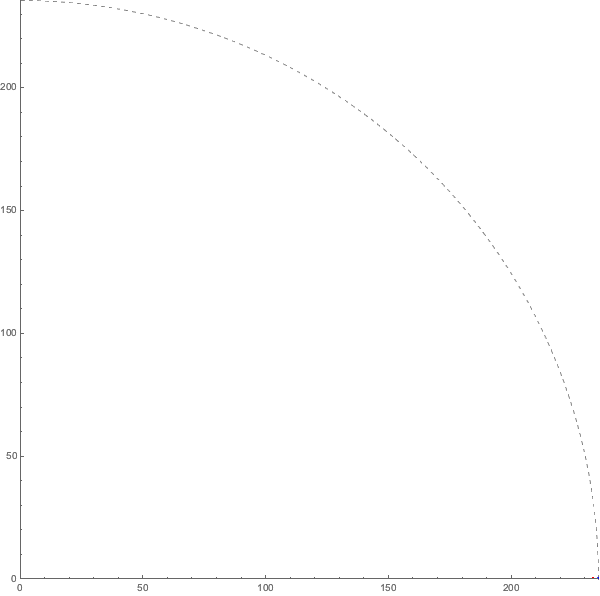I think the obvious answer to your question is yes, at least there would be increased wobble, though I don't know what a dented 104 node ellipse is. The wobble would be quite small in comparison to the Orbit, and as the big orbit would be measurably faster, I'm not sure the wobble would be more pronounced, even with the Earth-Moon orbit closer.
The answers to this question goes into detail about the Moon and I'll borrow the picture of what the Moon's orbit actually looks like in relation to the sun. It's quite close to an ellipse. This visible wobble is primarily the Moon's orbit around the Earth (not tidal). The tidal effect that the sun has on the Earth-Moon system is just a tiny fraction of the visible wobble in these pictures.

and

and that's the Moon's wobble, the Earth's is 81 times smaller.
If the Earth-Moon system was moved closer to the sun those wobbles would visibly increase in size compared to the big orbit, by the ratio to the distance (and the smaller tidal effects by the cube of the ratio), but there would also be fewer of them across one orbital cycle so the visible different wouldn't be all that much. Something else would happen before you got much closer too. The Earth's stable zone of it's hill sphere would shrink inside the Moon's orbit and the Moon would escape the Earth. You can't perturb an orbit all that much more than the Sun already perturbs the Moon without shaking the moon lose from the Earth. Venus distance, the Moon would still be stable, I think, and just barely, 5 or 10 million miles closer than Venus, it begins to enter the danger zone where the Earth likely loses the Moon and it becomes a very menacing near earth object.
Hope that's clear.
If someone else wants to answer with more detail, feel free.


